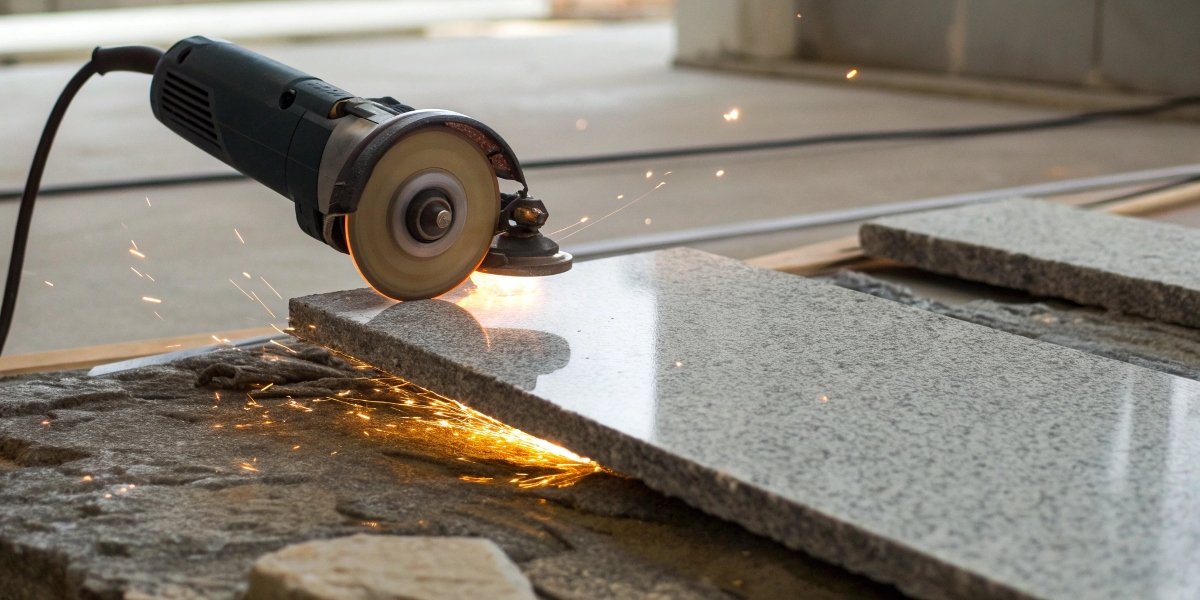
Struggling to cut tough materials like granite? Using the wrong tool can lead to broken blades, ruined stone, and wasted budgets. The right setup, however, makes the job surprisingly straightforward.
Yes, an angle grinder can cut granite effectively, but only if it’s equipped with a specialized diamond blade. You also need a powerful grinder and must use water for cooling to ensure a clean cut, prevent blade damage, and maintain safety.
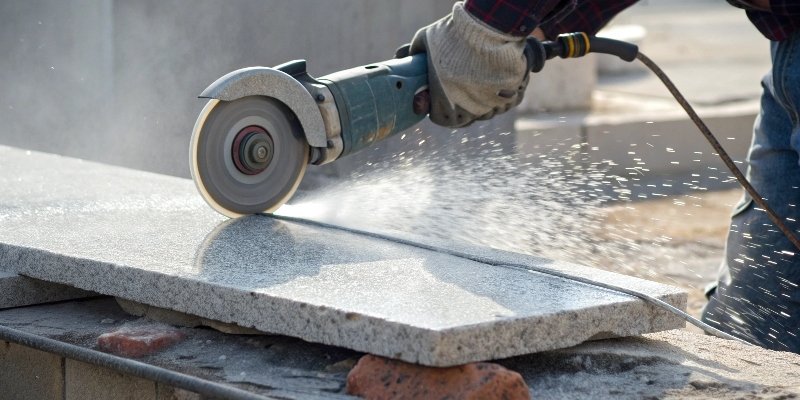
Cutting granite is a demanding task. It’s one of the hardest natural stones you can work with. Simply attaching any blade to your grinder and hoping for the best is a recipe for failure. But you don’t need a massive, dedicated stone saw for every job. With the correct components and techniques, your handheld angle grinder1 becomes a powerful and precise tool for cutting granite2. Let’s break down exactly what you need to get professional results safely and efficiently.
Will a diamond blade cut granite?
You have a diamond blade, but you’re not sure if it can handle the extreme hardness of granite. Choosing the wrong blade can damage both the tool and your expensive stone. A proper diamond blade, however, is designed precisely for this kind of work.
Yes, a high-quality diamond blade is the only type of blade that can cut granite efficiently with an angle grinder. The industrial-grade diamonds on the blade’s edge are significantly harder than the minerals in granite, allowing them to grind through the material with ease.
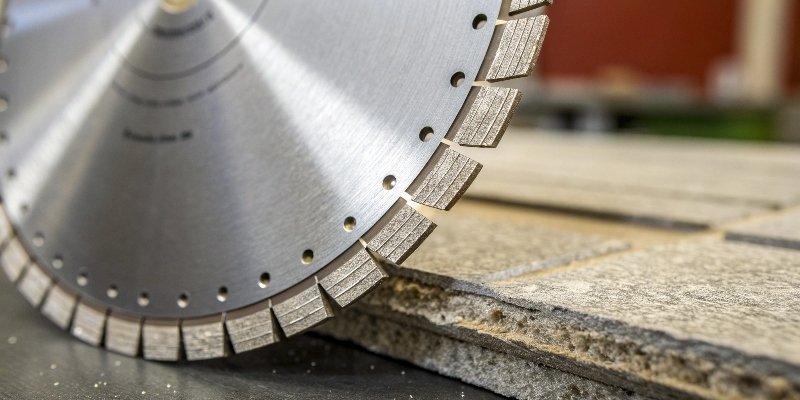
A diamond blade3 works because of a simple principle: the cutting material must be harder than the material being cut. Granite is mostly made of quartz and feldspar, which are very hard minerals. Standard abrasive wheels are just not hard enough and will wear down almost instantly. Diamond is the hardest natural material on earth. Our diamond blades feature a high-density electroplated diamond layer with a hardness rating of over HV2500. These aren’t just tiny diamonds glued on; they are bonded into a sophisticated metal matrix on a high-strength steel core. This process, which we have perfected over nearly three decades at our factory, ensures the diamonds are held securely. They work by grinding away the granite at a microscopic level, creating a clean and precise cut rather than chipping it apart with brute force.
Can an angle grinder cut granite?
You have an angle grinder, but you wonder if it’s powerful enough for a tough job like cutting granite. Using an underpowered tool is slow, frustrating, and can burn out the motor. Your angle grinder can do it, but only if it meets certain requirements.
An angle grinder can cut granite, provided it has enough power and the correct speed. We recommend a grinder with a power rating of at least 1500W and a rotational speed of 10,000-15,000 RPM. These specs ensure the blade can maintain its cutting speed through the dense stone.
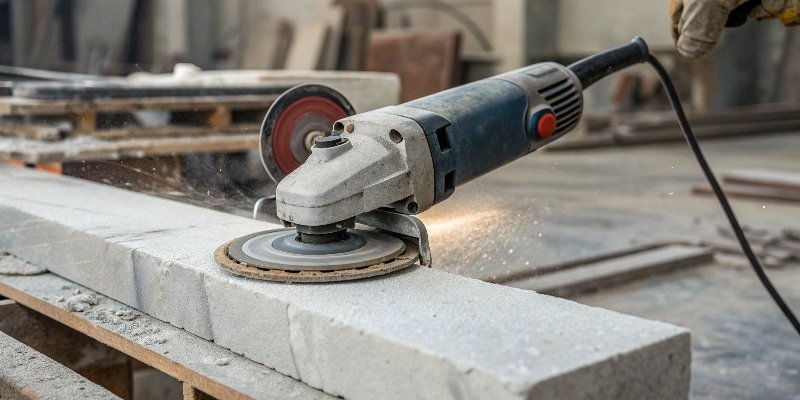
Power and speed are critical when cutting granite. A grinder with less than 1500 watts of power will likely get bogged down. The motor will strain, the blade will slow down, and the risk of the tool kicking back increases. The ideal speed of 10,000-15,000 RPM allows the diamond blade to achieve a linear speed of 30-50 meters per second. This is the velocity needed for the diamonds to abrade the granite efficiently. For added stability and tool longevity, a grinder with a brushless motor4 is an excellent choice.
Most importantly, you must use a cooling system. Cutting granite dry generates immense heat. This heat can warp the steel core of your blade, cause the diamonds to detach from the matrix, and even lead to thermal shock that cracks the granite. A wet-cutting kit5 that feeds water to the blade is essential. It not only keeps everything cool but also dramatically reduces the amount of harmful silica dust created during cutting.
What kind of angle grinder blade to cut granite?
You need to cut granite, but the huge selection of blades is confusing. Picking the wrong one means a poor finish, a dangerously short lifespan, and a wasted investment. You need to look for a specific type of blade to get the job done right.
For cutting granite, you must use a diamond blade made specifically for hard stone and masonry. Check that it has a high concentration of industrial diamonds and a strong, heat-treated steel core. Also, make sure the arbor hole size (e.g., 22.23mm, 25.4mm) perfectly matches your grinder.
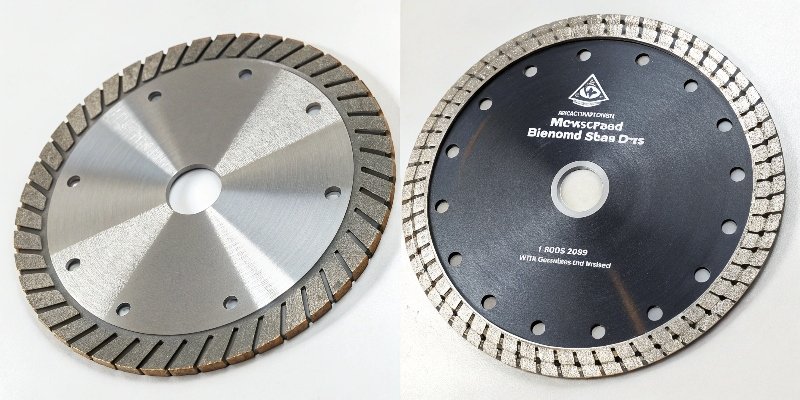
I once had a new client call me in a panic. He tried to cut a 10mm-thick granite slab with a standard abrasive wheel. He said it was like trying to cut steel with a butter knife. The difference in performance is not small; it’s night and day. Using the right diamond blade is the key to efficiency and quality. Let’s compare a proper diamond blade, like our RL series, with a conventional abrasive wheel for this task.
| Feature | Conventional Abrasive Wheel | RL Diamond Granite Blade |
|---|---|---|
| Cutting Efficiency | 10+ minutes / 10mm thickness | ~3 minutes / 10mm thickness |
| Cut Quality | Obvious chipping, rough edges | Smooth, clean edge (±0.1mm) |
| Blade Lifespan | Needs replacement after ~5 cuts | Can make 50+ continuous cuts |
| Process | Brute force abrasion, high heat | Controlled grinding, lower heat |
The data speaks for itself. A dedicated diamond blade cuts faster, produces a far superior finish, and lasts exponentially longer, making it much more cost-effective in the long run.
What material cannot be cut by an angle grinder?
Angle grinders are incredibly versatile, and it can feel like they can cut anything. But using this powerful tool on the wrong material is not just ineffective; it can be incredibly dangerous. Knowing your tool’s limitations is the most important part of safety.
You should never use a standard cutting disc on an angle grinder to cut wood, tempered glass, or most plastics. These materials can cause violent kickback, shatter explosively, or melt and gum up the wheel, creating serious hazards for the operator.
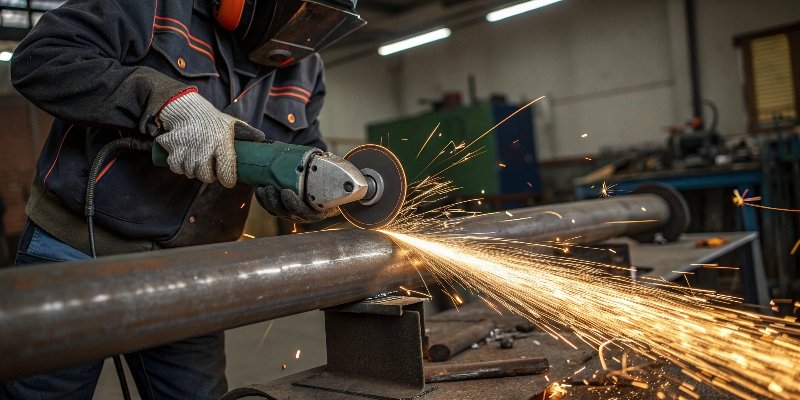
While angle grinders excel at cutting masonry and metal, some materials are off-limits for very good reasons.
Wood: The Danger of Kickback
This is the most critical one. The high RPM of an angle grinder is not designed for cutting wood. The cutting wheel can easily snag the wood grain, causing the tool to violently buck and kick back toward you. This is one of the most common causes of serious workshop injuries. While some specialty carving discs exist for wood, a standard cutting or grinding disc should never be used on it.
Tempered Glass: Explosive Shattering
Tempered glass is manufactured with high internal stress. This is what allows it to crumble into small, safer pieces when it breaks. Unlike regular plate glass, you cannot score or cut it. An angle grinder will breach the surface and release that internal tension all at once, causing the entire sheet to shatter explosively.
Plastics: A Messy, Melted Failure
The friction from a high-speed abrasive wheel generates a lot of heat. When used on plastics like PVC, acrylic, or polycarbonate, this heat doesn’t cut the material; it melts it. The molten plastic will gum up the cutting disc, create a messy and inaccurate edge, and release noxious fumes.
Conclusion
Yes, you can cut granite with an angle grinder. Just be sure to use a high-quality diamond blade, a powerful grinder, and a wet-cutting technique for safety and perfect results.
-
Explore how angle grinders can be effectively used for cutting granite with the right techniques and tools. ↩
-
Discover essential tips and techniques for cutting granite safely and efficiently. ↩
-
Learn about diamond blades and their unique properties that make them ideal for cutting hard materials like granite. ↩
-
Find out why a brushless motor is beneficial for cutting granite and tool longevity. ↩
-
Learn about wet-cutting kits and their importance in reducing heat and dust during cutting. ↩
Written by
leeon
You may also be interested in:

Can I put a circular saw blade on a grinder?
You need to make a quick cut, and your angle grinder is right there. It’s tempting to try and fit a saw blade on it.

Is it safe to use an abrasive wheel on a cold saw?
Worried about using an abrasive wheel on your cold saw? An incompatible wheel can shatter, posing a huge risk. We will show you the correct
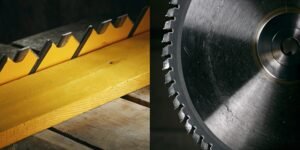
What circular saw blade should I buy?
Feeling lost in a sea of circular saw blades? The wrong choice can ruin expensive materials and delay your entire project. Let’s make sure you

What are the best reciprocating saw blades?
Are you tired of reciprocating saw blades snapping or going dull right in the middle of a tough job? It wastes time and money. Let’s
